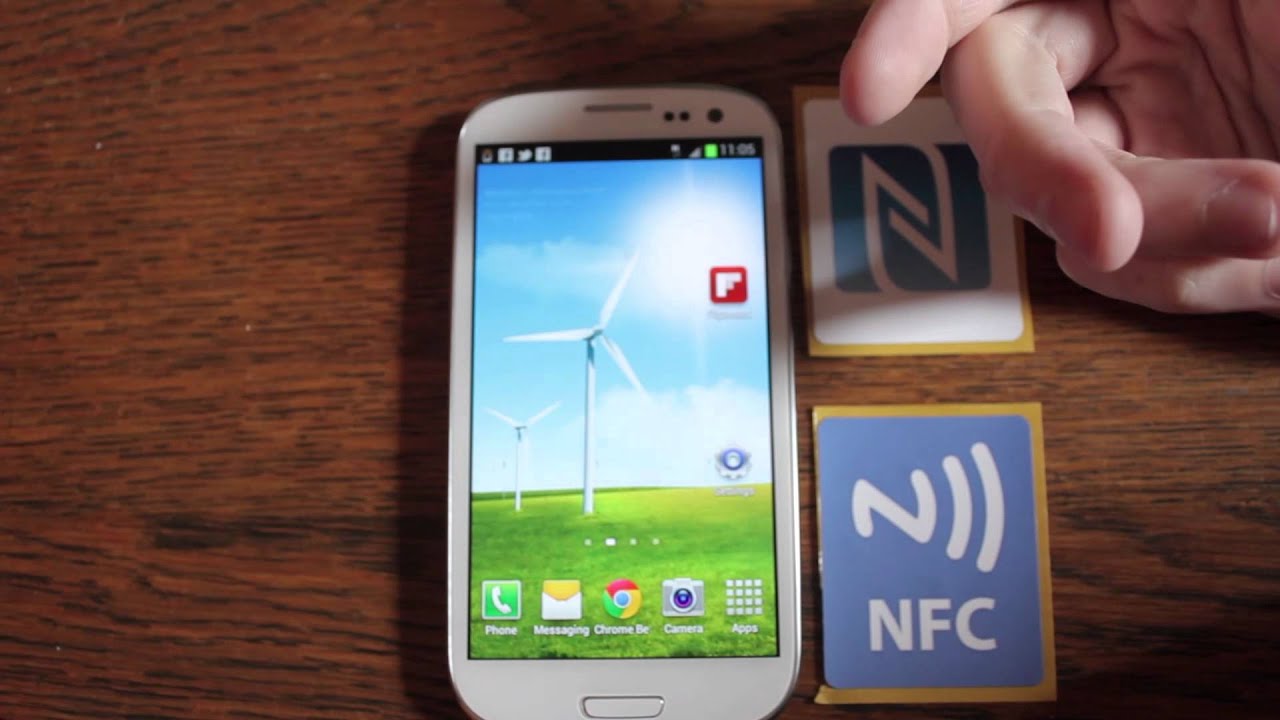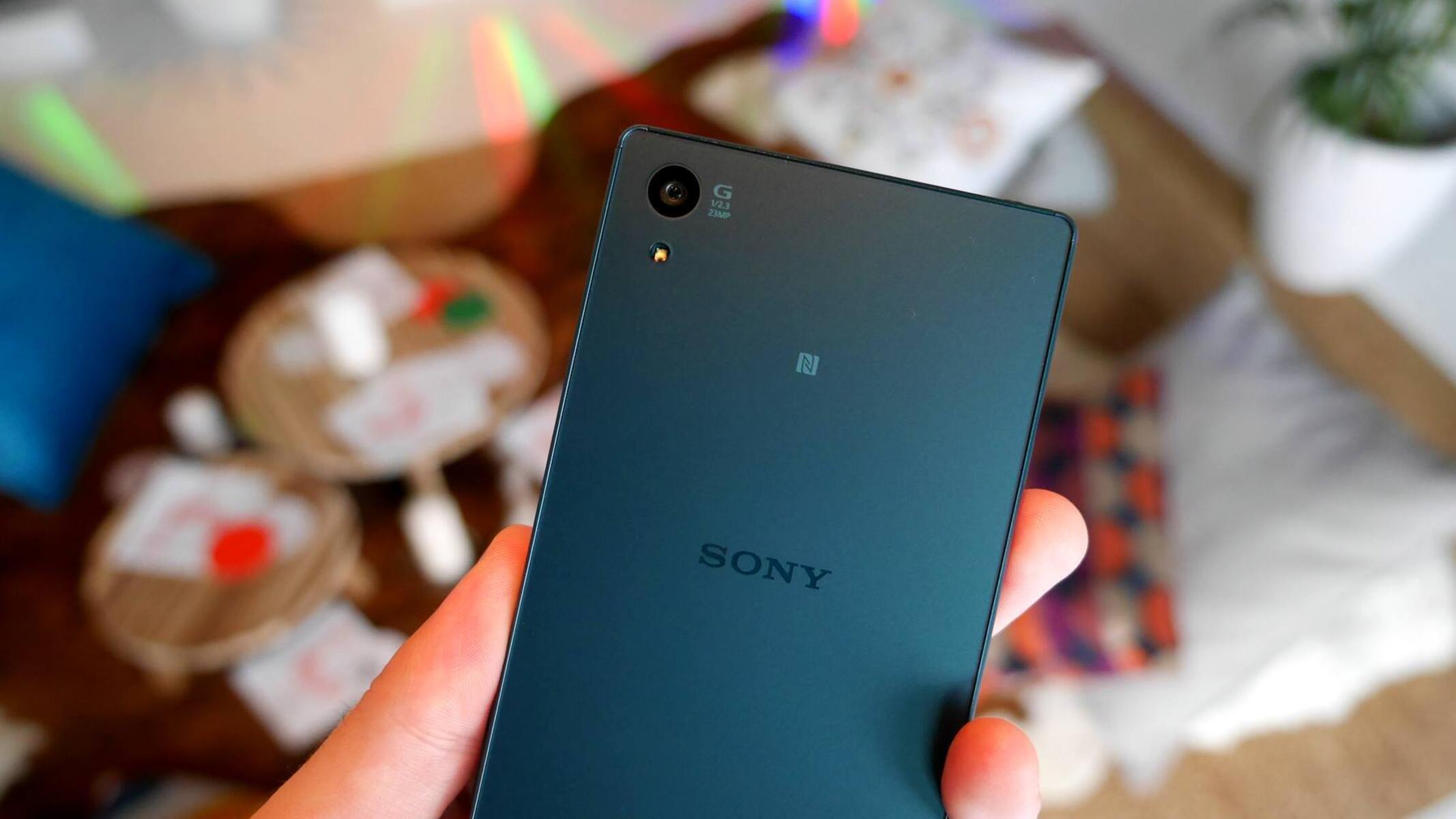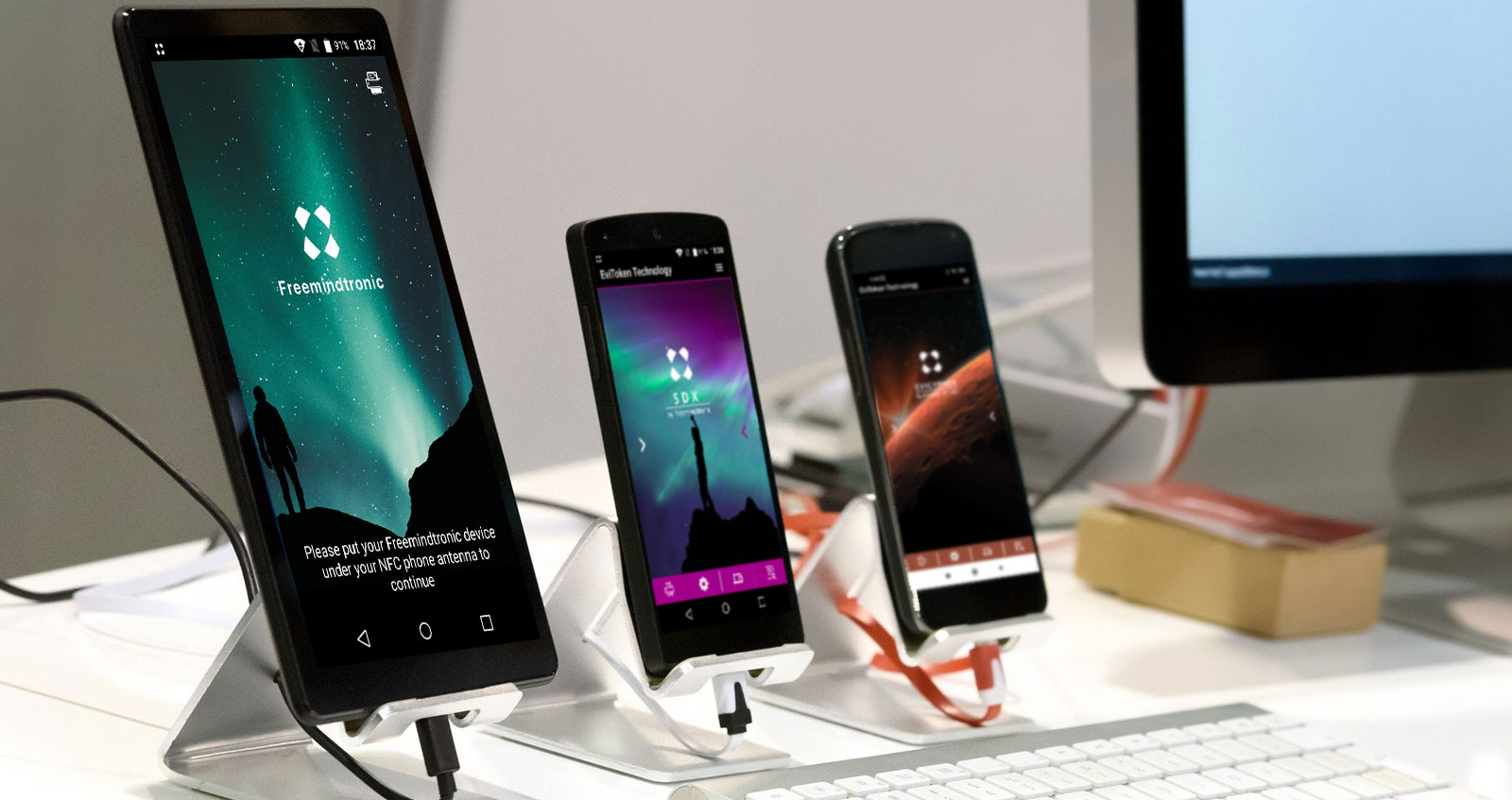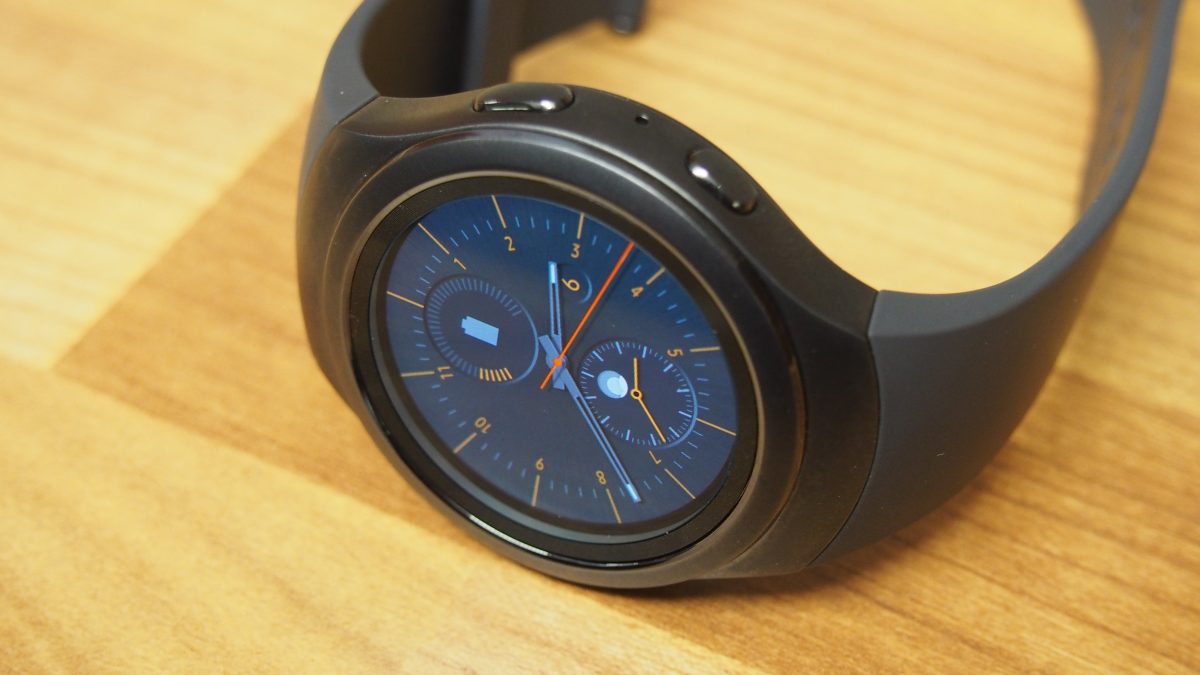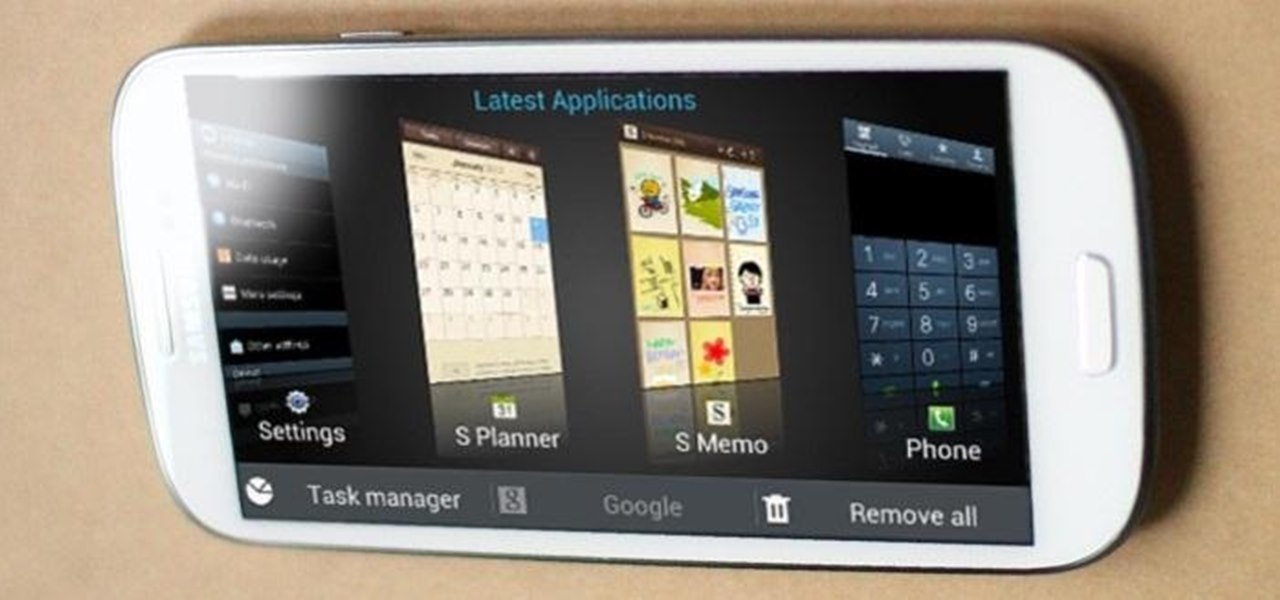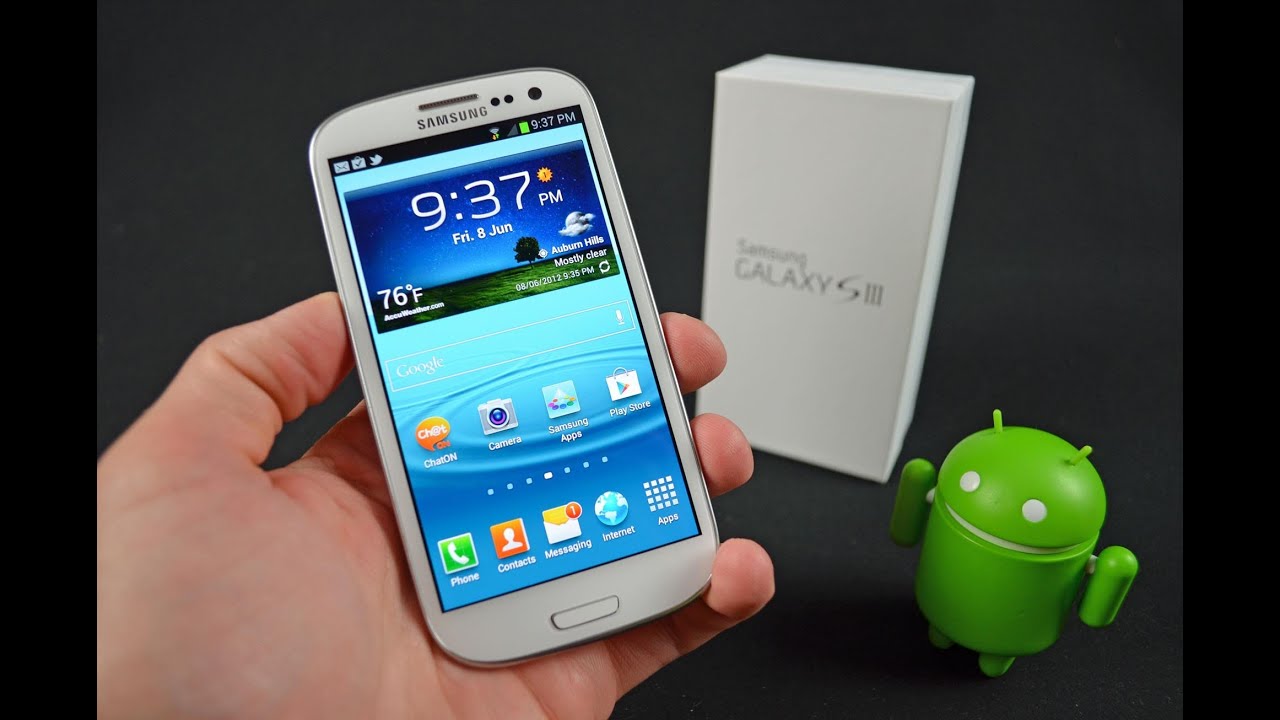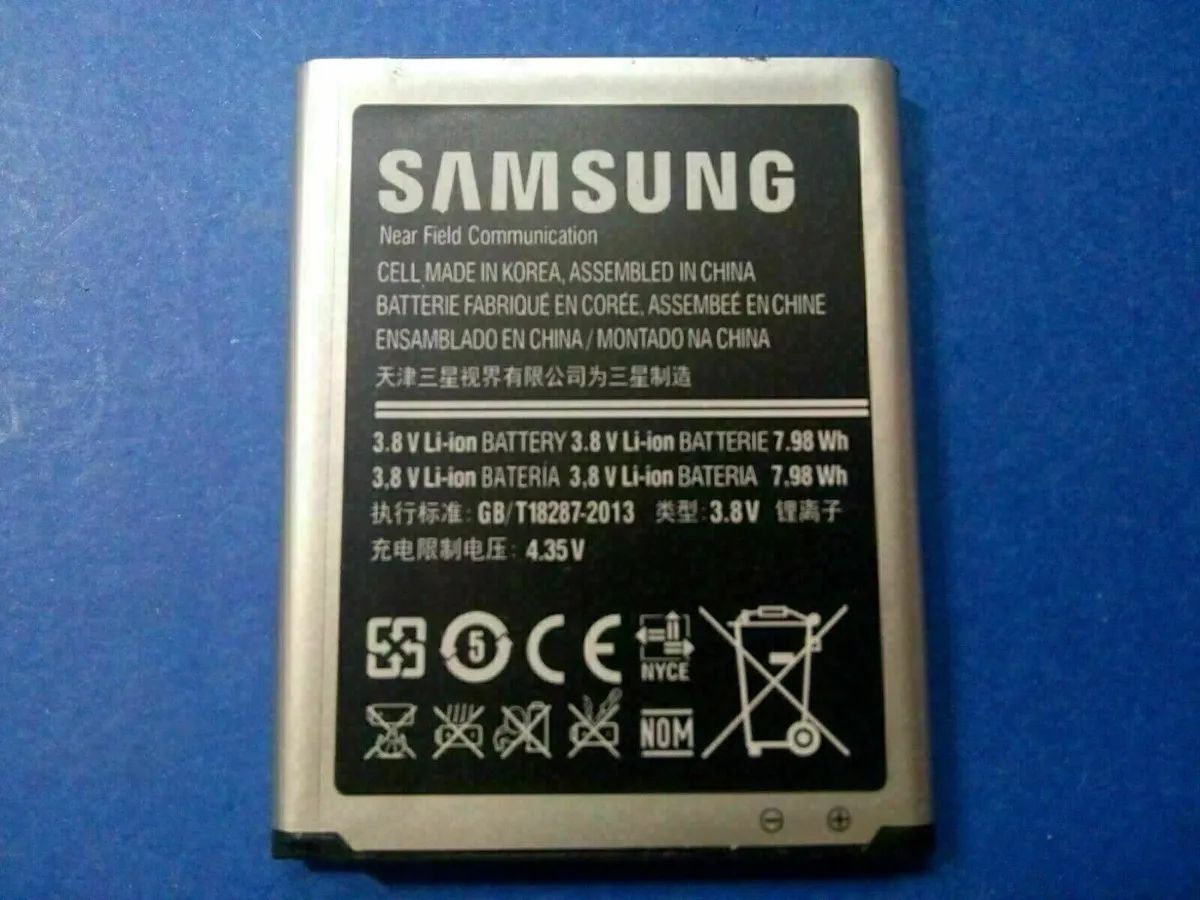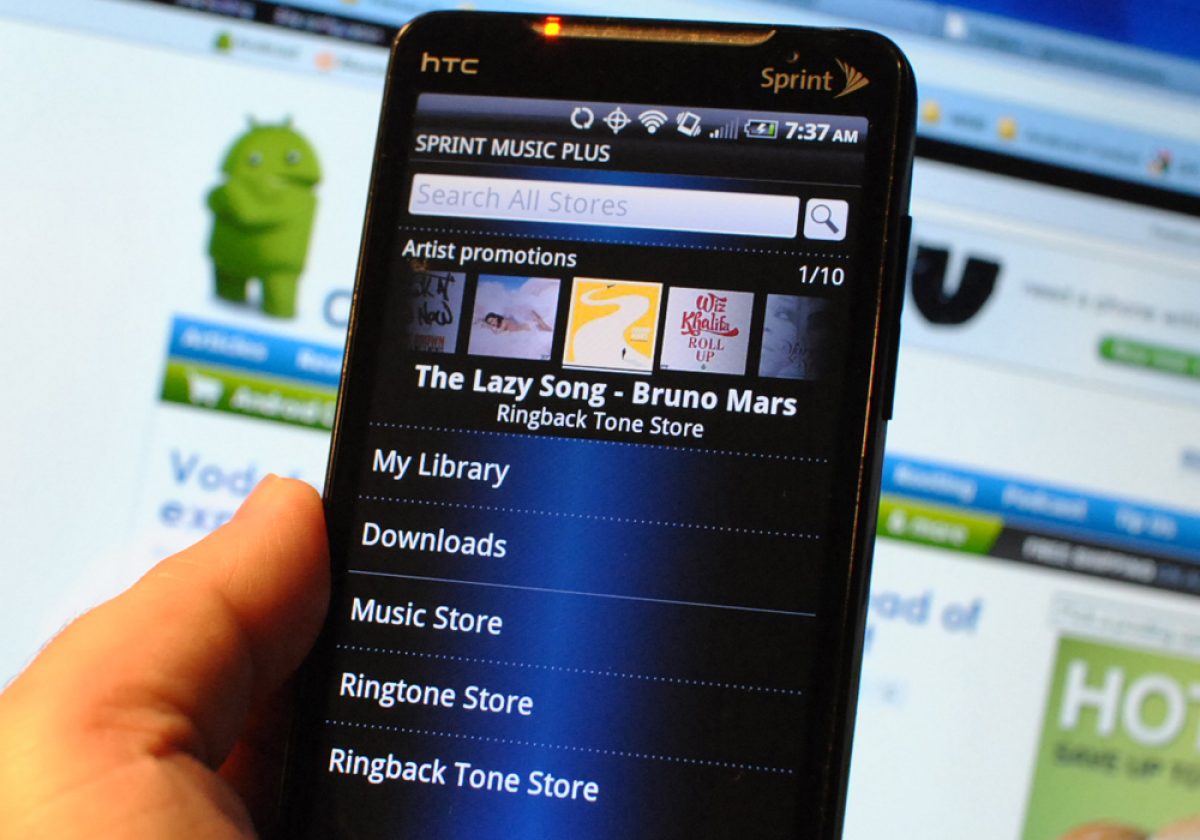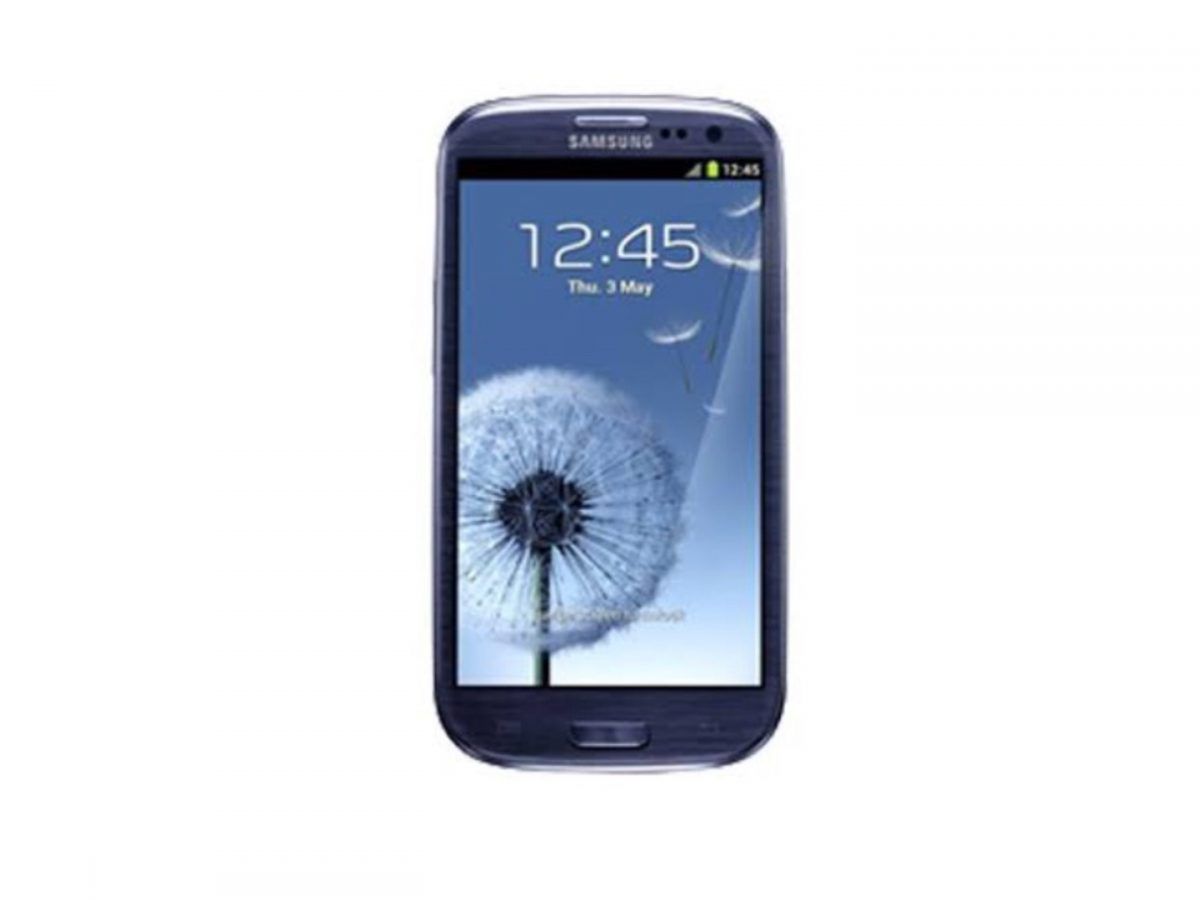What is NFC?
NFC, or Near Field Communication, is a short-range wireless communication technology that enables devices to exchange data when they are in close proximity to each other. It allows for quick and convenient transactions between devices without the need for physical contact or complicated setup processes. NFC uses electromagnetic radio waves to establish a connection between two devices, typically within a range of a few centimeters. This makes it ideal for various applications, such as mobile payments, data transfer, and access control.
NFC technology is built into many devices today, including smartphones, tablets, and even some credit cards. It has gained popularity due to its ease of use and versatility. When it comes to smartphones, NFC is commonly found in Android devices, including the popular Samsung Galaxy S3.
One of the key advantages of NFC is its simplicity. It enables users to quickly and effortlessly interact with compatible devices by simply bringing them close together. The communication between devices happens seamlessly and can be triggered by a variety of actions, such as tapping or hovering.
Moreover, NFC is a secure technology that ensures the privacy and integrity of the data being transferred. It utilizes encryption and authentication protocols to protect sensitive information, making it suitable for applications that involve financial transactions or personal data exchange.
The applications of NFC technology are diverse and constantly expanding. From contactless payments at retail stores and ticketing systems in public transportation to sharing files between devices and automating tasks through NFC tags, the possibilities are endless.
In the next sections, we will explore how NFC works, how to enable it on your Galaxy S3, and the various ways you can utilize NFC to enhance your smartphone experience.
How Does NFC Work?
NFC technology operates on the principles of electromagnetic induction and radio frequency identification (RFID). These technologies allow for the wireless exchange of information between NFC-enabled devices, such as smartphones, tablets, or NFC tags.
When two NFC-enabled devices are brought close together, their built-in NFC antennas create a magnetic field. This magnetic field enables the devices to communicate with each other and exchange data. The interaction between the devices occurs in what is known as the near field, within a range of a few centimeters.
There are two main modes of NFC communication: active and passive. In active mode, both devices generate their own magnetic field and actively participate in the data exchange process. This mode is commonly used for activities such as file sharing or mobile payments.
In passive mode, one NFC-enabled device generates the magnetic field and acts as the initiator, while the other device responds by utilizing its own antenna to receive and transmit data. An example of passive mode usage is tapping an NFC-enabled smartphone against an NFC tag to retrieve information or perform a specific action.
NFC operates at a frequency of 13.56 megahertz (MHz) and can transfer data at speeds of up to 424 kilobits per second (Kbps). While this may seem relatively slow compared to other wireless communication technologies like Bluetooth or Wi-Fi, NFC’s primary focus is on quick and efficient communication within close proximity.
The data that can be exchanged between NFC-enabled devices varies depending on the application. It can include contact information, URLs, payment credentials, or even commands to trigger specific actions on the receiving device.
It’s worth noting that NFC connections are established on a one-to-one basis, meaning that only two devices can communicate at a time. This characteristic ensures a secure and streamlined communication process.
Overall, NFC technology simplifies and enhances the way we interact with our devices. Its seamless communication and versatility make it a valuable feature in modern smartphones, offering a wide range of functionalities and possibilities for users to explore.
What can you do with NFC on Galaxy S3?
The NFC capabilities of the Samsung Galaxy S3 unlock a world of possibilities for users. With NFC technology integrated into the device, you can explore a range of convenient and innovative features. Here are some of the exciting things you can do with NFC on your Galaxy S3:
- Contactless Payments: One of the standout features of NFC is its ability to facilitate contactless payments. By linking your Galaxy S3 to a mobile payment service like Samsung Pay or Google Pay, you can simply tap your phone against a compatible payment terminal to complete transactions securely and conveniently.
- File Sharing: NFC allows you to transfer files, photos, videos, and more between two Galaxy S3 devices or any other NFC-enabled smartphone. Just bring the devices close together, select the file you want to share, and tap to initiate the transfer. It’s a quick and hassle-free way to share content with friends or colleagues.
- Smart Tags and Automation: NFC tags are small, programmable stickers or keychains that can be encoded with specific actions. With the Galaxy S3’s NFC capabilities, you can program these tags to perform a variety of tasks when your phone comes into contact with them. For example, you can place an NFC tag near your bedside table and have it automatically enable “Do Not Disturb” mode and set an alarm when you tap your phone against it.
- Access Control and Authentication: NFC can also be used for secure access control and authentication purposes. You can pair your Galaxy S3 with NFC-enabled access cards or key fobs to unlock doors or gain entry to secure areas with just a tap. Some workplace environments or residential complexes have adopted NFC technology for enhanced security and convenience.
- Launching Apps and Tasks: By utilizing NFC tags or compatible devices, you can create customized shortcuts to launch your favorite apps or perform specific tasks. For example, you can place an NFC tag in your car and have it automatically launch your preferred music app, navigation app, and set the phone to silent mode when you tap your phone against it.
These are just a few examples of what you can do with NFC on your Galaxy S3. The versatility of NFC allows for endless possibilities and personalized experiences, making your smartphone usage more convenient, efficient, and enjoyable.
Turning on NFC on Galaxy S3
Enabling NFC on your Samsung Galaxy S3 is a simple process that allows you to take advantage of the various NFC features available on your device. Here’s how you can turn on NFC on your Galaxy S3:
- Open the Settings app on your Galaxy S3. You can access the Settings app by tapping the gear-shaped icon in the app drawer or by swiping down from the top of the screen to open the notification panel and tapping on the gear icon there.
- In the Settings menu, scroll down and tap on “More settings” or “More networks,” depending on your device’s software version.
- Look for the “NFC” option and tap on it to access the NFC settings.
- On the NFC settings page, you’ll find a toggle switch to enable or disable NFC. Make sure the toggle switch is in the “On” position to enable NFC functionality on your Galaxy S3.
Once you’ve turned on NFC, your Galaxy S3 is now ready to make use of various NFC features such as file sharing, mobile payments, and NFC tags. It’s important to note that some features may require additional setup or third-party apps, so make sure to explore the available options and customize your NFC experience to suit your needs.
When you’re not using NFC, you can easily disable it by toggling the NFC switch to the “Off” position. This can help conserve battery life, as keeping NFC constantly enabled may drain your device’s battery faster.
With NFC enabled on your Galaxy S3, you can now enjoy the convenience and functionality that NFC technology offers. Whether you’re sharing files, making contactless payments, or automating tasks with NFC tags, the possibilities are endless with this powerful feature on your smartphone.
How to Share Files Using NFC on Galaxy S3
One of the key features of NFC on the Samsung Galaxy S3 is the ability to quickly and wirelessly share files with other NFC-enabled devices. Whether you want to exchange photos, videos, documents, or any other type of file, NFC makes the process seamless and hassle-free. Here’s how you can share files using NFC on your Galaxy S3:
- Make sure that NFC is enabled on both your Galaxy S3 and the receiving device. You can enable NFC on your Galaxy S3 by following the steps mentioned in the previous section.
- Open the file or content that you wish to share on your Galaxy S3. This could be a photo in the gallery, a document in a file manager app, or any other file you want to transfer.
- Bring the back of your Galaxy S3 close to the receiving device. Ideally, you should align the NFC antennas to ensure a successful connection. The devices should be within a few centimeters of each other.
- Once the devices are in close proximity, you will hear a confirmation sound or feel a vibration indicating a successful NFC connection. The transfer will begin automatically, and the progress may be displayed on the screen.
- Wait for the file to be transferred. The time it takes will depend on the size of the file and the speed of the NFC connection. Larger files may take a bit longer to transfer.
- Once the file transfer is complete, you will receive a notification on both the sending and receiving devices.
- You can now access the shared file on the receiving device. It will typically be saved in the appropriate location based on the file type. For example, photos may be saved in the gallery, while documents may be saved in the downloads folder.
- Remember to disable NFC on your Galaxy S3 once you’ve finished sharing files to conserve battery life, as keeping NFC enabled for long periods may drain your device’s battery faster.
With NFC file sharing, you can easily exchange content between your Galaxy S3 and other NFC-enabled devices without the need for cables or complicated setup processes. It’s a convenient and efficient way to share files in various scenarios, whether you’re collaborating with colleagues, sharing memories with friends, or simply transferring data between your own devices.
Using NFC to Make Payments with Galaxy S3
The NFC functionality of the Samsung Galaxy S3 opens up a world of convenience by allowing you to make contactless payments using your smartphone. By linking your Galaxy S3 to a mobile payment service like Samsung Pay or Google Pay, you can enjoy the benefits of NFC technology to make secure and hassle-free payments. Here’s how you can use NFC to make payments with your Galaxy S3:
- Ensure that NFC is enabled on your Galaxy S3 by following the steps outlined in the previous sections.
- Download and install the mobile payment app of your choice, such as Samsung Pay or Google Pay, from the Google Play Store. These apps will guide you through the setup process and enable the necessary features for NFC payments.
- Open the mobile payment app and proceed with the setup instructions. You will typically be required to add your credit or debit card information to the app. Follow the prompts to complete the card verification process.
- Once your card is linked and verified, you are ready to make NFC payments with your Galaxy S3. To initiate a payment, ensure that NFC is enabled on your device and bring your phone close to the payment terminal or card reader at the checkout counter.
- Hold the back of your Galaxy S3 against the payment terminal or card reader, making sure to align the NFC antennas. The devices should be within a few centimeters of each other.
- Your Galaxy S3 will establish a secure NFC connection with the payment terminal, and the payment app will prompt you to authorize the transaction. Depending on the app, you may need to provide additional verification, such as fingerprint authentication or PIN entry, to complete the payment.
- Once the payment is authorized, you will receive a confirmation on your Galaxy S3 and the payment terminal. You may also receive an electronic receipt or confirmation in the mobile payment app or via email.
- Remember to disable NFC on your Galaxy S3 after making payments to conserve battery life. Keeping NFC enabled for extended periods may drain your device’s battery faster.
- Enjoy the convenience and security of using NFC to make contactless payments with your Galaxy S3. With just a tap of your phone, you can complete transactions quickly and securely, without the need for physical cards or cash.
The ability to use your Galaxy S3 for NFC payments adds a new level of convenience to your everyday life. Whether you’re shopping, dining, or simply running errands, the simplicity and security of making contactless payments with your smartphone make it a valuable feature to explore.
NFC Tags: What are they and how to use them with Galaxy S3
NFC (Near Field Communication) tags are small, programmable devices that contain a tiny microchip and an antenna. These tags can be programmed to store and transfer information, and they utilize NFC technology to communicate with NFC-enabled devices, such as your Samsung Galaxy S3. NFC tags come in various forms, including stickers, keychains, and cards, and they can be used to automate tasks, trigger actions, or provide information with a simple tap of your phone. Here’s what you need to know about NFC tags and how to use them with your Galaxy S3:
What are NFC Tags?
NFC tags are passive devices that rely on an active NFC smartphone or tablet to power their operation. They typically store a small amount of data, called the payload, which can be read or written by NFC-enabled devices. The payload can contain various types of information, such as URLs, contact details, text messages, or commands to perform specific actions.
How to Use NFC Tags with Galaxy S3:
- Ensure that NFC is enabled on your Galaxy S3. Refer to the earlier section on how to turn on NFC on your device.
- Obtain NFC tags compatible with your Galaxy S3. These can be purchased online or at electronics stores, and they come in various shapes, sizes, and storage capacities.
- Download an NFC tag reader/writer app from the Google Play Store on your Galaxy S3. Some popular apps for this purpose include NFC Tools, Trigger, or NFC Reader.
- Launch the NFC tag app on your Galaxy S3 and place the tag near the back of your phone, ensuring that the NFC antennas align.
- Follow the prompts in the app to read or write data onto the NFC tag. You can write various types of information, such as URLs, text messages, contact information, or even specific commands for your device to perform, such as turning on Wi-Fi or launching a specific app.
- Once the data is written onto the NFC tag, you can remove the tag from your phone.
- Whenever you want to access the data stored on the NFC tag, simply bring your Galaxy S3 close to the tag and ensure the NFC connection is established. The phone will read the data and execute the programmed action or display the information associated with the tag.
NFC tags provide a convenient way to automate tasks, trigger actions, or share information with a simple tap of your Galaxy S3. Whether you want to launch specific apps, toggle device settings, or share contact details, NFC tags offer endless possibilities to enhance your smartphone experience with personalized automation.
Troubleshooting Common NFC Issues on Galaxy S3
NFC (Near Field Communication) technology on the Samsung Galaxy S3 is designed to provide seamless and convenient communication between devices. However, like any technology, there are times when you may encounter issues with NFC functionality. Here are some common NFC issues you may face with your Galaxy S3 and how to troubleshoot them:
1. NFC Not Turning On:
If you are unable to turn on NFC on your Galaxy S3, follow these steps:
- Restart your phone and try enabling NFC again.
- Ensure that your device software is up to date by checking for software updates in the Settings app.
- If the issue persists, try resetting the phone’s network settings. This can be done by going to Settings > Backup and Reset > Reset Network Settings.
2. Connection Issues:
If you are having trouble establishing an NFC connection with another device, try the following:
- Ensure that NFC is enabled on both devices and that they are in close proximity to each other.
- Check for any physical barriers or interference that may obstruct the NFC signal, such as metal cases or objects.
- Restart both devices and try connecting again.
- Ensure that the NFC tags or the receiving device are compatible with the Galaxy S3.
3. Slow Data Transfer:
If you experience slow data transfer speeds when using NFC on your Galaxy S3, consider the following steps:
- Ensure that both devices are held close together, with the NFC antennas aligned properly.
- Check if any apps or processes are running in the background that may be affecting the transfer speed. Close unnecessary apps or perform a device restart to free up system resources.
- If the issue persists, try transferring smaller files or reducing the number of files being transferred at once.
4. Compatibility Issues:
If you are encountering compatibility issues with NFC on your Galaxy S3, consider the following:
- Make sure that the NFC tags or the receiving device support the same NFC standards as your Galaxy S3 (usually NFC Forum Type 2 or 4).
- Check if there are any software updates available for the Galaxy S3 that may improve compatibility with certain NFC devices or tags.
- Contact the manufacturer or consult the documentation of the NFC tags or devices you are trying to connect with for further assistance.
If none of the above troubleshooting steps resolve your NFC issues on the Galaxy S3, it is recommended to reach out to Samsung support or your device carrier for further assistance. They may be able to provide specific guidance or perform a device diagnostic to identify and address the problem.
FAQs about NFC on Galaxy S3
If you have questions about using NFC (Near Field Communication) on your Samsung Galaxy S3, you’re not alone. Here are answers to some frequently asked questions to help you better understand NFC on your Galaxy S3:
1. What does NFC stand for?
NFC stands for Near Field Communication. It is a short-range wireless communication technology that allows devices to exchange data when they are in close proximity to each other.
2. Is NFC available on the Samsung Galaxy S3?
Yes, NFC technology is available on the Samsung Galaxy S3. It is integrated into the device, allowing you to take advantage of various NFC features and capabilities.
3. Can I use NFC for mobile payments with my Galaxy S3?
Yes, you can use NFC on your Galaxy S3 for mobile payments by linking your device to a mobile payment service such as Samsung Pay or Google Pay. Simply tap your phone against a compatible payment terminal to complete transactions securely and conveniently.
4. What other things can I do with NFC on my Galaxy S3?
In addition to mobile payments, NFC on your Galaxy S3 allows you to share files with other NFC-enabled devices, automate tasks with NFC tags, access control and authentication, launch apps and perform various actions on compatible devices, among other possibilities.
5. Can I use NFC on my Galaxy S3 for data transfer?
Yes, you can use NFC on your Galaxy S3 to transfer files, photos, videos, and more with other NFC-enabled devices. Simply bring the devices close together, select the file you want to share, and tap to initiate the transfer.
6. Are NFC payments secure on the Galaxy S3?
Yes, NFC payments on the Galaxy S3 are secure. NFC utilizes encryption and authentication protocols to protect sensitive information during payment transactions.
7. Can I write my own data onto NFC tags with my Galaxy S3?
Yes, you can write your own data onto NFC tags using your Galaxy S3. You will need an NFC tag reader/writer app from the Google Play Store and compatible NFC tags to store the data of your choice.
8. Can I use NFC on my Galaxy S3 with devices from other brands?
Yes, NFC technology is standardized, which means you can use NFC on your Galaxy S3 to interact with NFC-enabled devices from various brands as long as they support the same NFC standards.
9. Can I disable NFC on my Galaxy S3?
Yes, you can disable NFC on your Galaxy S3 by going to the NFC settings in the device’s settings app and toggling the NFC switch to the “Off” position. This can help conserve battery life when NFC is not in use.
10. Where can I get more information about NFC on my Galaxy S3?
For more information about NFC on your Galaxy S3, you can refer to the device’s user manual, the Samsung support website, or consult online forums and communities for additional resources and guidance.
NFC technology on the Samsung Galaxy S3 opens up a range of possibilities and convenience. If you have further questions about NFC usage or troubleshooting, refer to the device’s documentation or reach out to the manufacturer’s support team for assistance.
Conclusion
NFC (Near Field Communication) technology on the Samsung Galaxy S3 offers a range of capabilities and convenience to enhance your smartphone experience. From contactless payments and file sharing to automation with NFC tags, the possibilities are endless. By following the steps outlined in this guide, you can easily enable NFC on your Galaxy S3 and make use of its various features.
NFC enables quick and secure communication between devices at close proximity, allowing you to share files, make mobile payments, automate tasks, and much more. With just a tap or a touch, your Galaxy S3 can accomplish tasks that save you time and simplify your daily routine.
Whether you’re using NFC to pay for purchases, transfer files, customize your smartphone with NFC tags, or explore other NFC applications, it’s important to ensure that your device is compatible with the necessary technology and that you have the appropriate apps installed.
Remember to troubleshoot any issues you may encounter with NFC on your Galaxy S3 by following the recommended steps. In case of persistent problems, don’t hesitate to reach out to Samsung support or your device carrier for further assistance.
Enjoy the convenience and possibilities that NFC brings to your Samsung Galaxy S3. Take advantage of this powerful technology to simplify your life, connect with other devices, and make use of the many exciting features available at your fingertips.
Embrace the world of NFC and unlock the full potential of your Samsung Galaxy S3!







